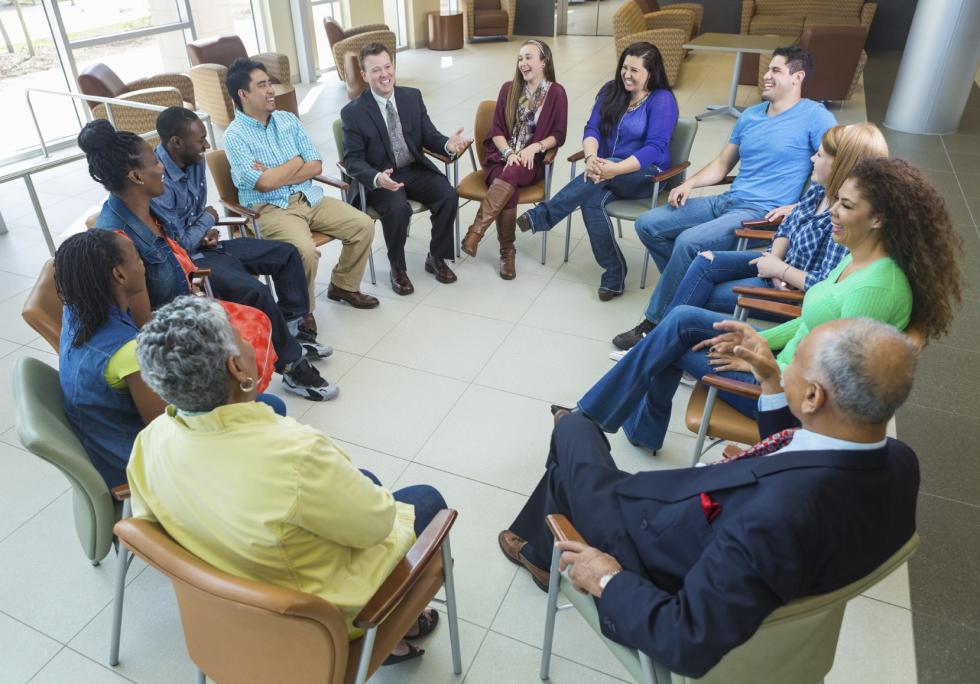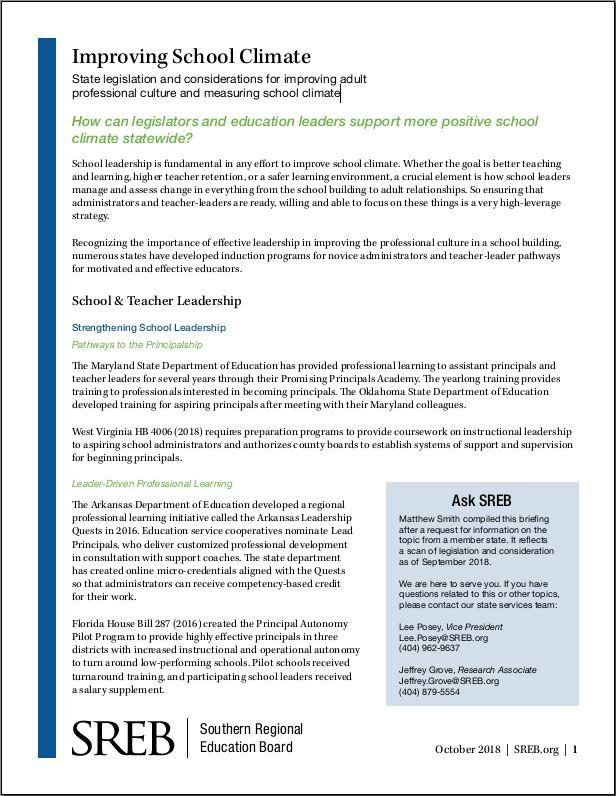In This Together: How States Foster Safe Learning Environments
As legislatures convene regular sessions, we at SREB have observed an uptick in bills focused on school safety. Some propose dramatic changes in the way school districts hire and train security personnel, develop emergency plans, or address students’ mental and emotional health. Others make technical changes to standing laws in order to lower the barriers districts face in creating safe learning environments.
A recent presentation in South Carolina by SREB President Stephen Pruitt suggests another side of this issue that also deserves attention from policymakers: focusing on school leadership and teacher professional learning.
Dr. Pruitt shared state examples and drew on research to demonstrate how school administrators and teacher leaders can foster trust between colleagues — important in any emergency — and high expectations for students, both hallmarks of a safe and enriching learning environment. State policymakers, for their part, can adopt priorities that signal a commitment to improving adult professional culture.
Put simply, it’s about relationships, both within a school and across the broader community. As individual educators struggle, they seek advice from peers, school leaders, and instructional coaches. School administrators address challenges by soliciting feedback from teachers, parents and community members.
When educators, students, and the surrounding community all feel safe providing input and participating in the school’s culture, they’re more likely to champion strategies that reduce teacher attrition and transform student learning.
The briefing document accompanying Dr. Pruitt’s presentation provides insight into how this can work.
Some states have made large-scale structural changes to create advanced teacher roles and develop tiered certification systems. Others have reaped benefits without major investments or changes to state law. In Louisiana, for instance, educators identified as teacher-leaders provide peer coaching and mentorship. Maryland has required school climate surveys since 2017, and North Carolina now partners with a teaching center to administer the Working Conditions Survey, which in 2018 brought over 100,000 responses.
Regardless of the approach, state policymakers should consider which strategies improve relationships between educators, school leaders and the community, and most importantly between teachers and students. A strong, responsive professional culture promotes student achievement and engagement as well as educator satisfaction — a healthy complement to school safety bills introduced during 2019 legislative sessions.



